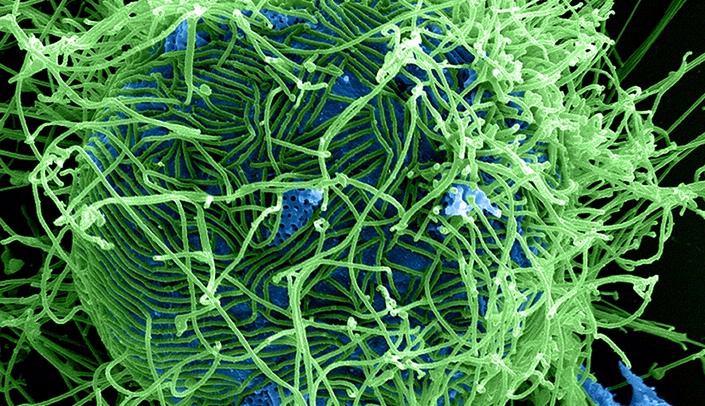Under an electron microscope, it looks like a harmless shepherd's crook or a scheerio with a long tail, but it can decimate the human immune system in a matter of days and cause death within three weeks.
Rare, but deadly, Ebola is a filovirus, one of four distinct families of hemorrhagic fever viruses. There are five different strains of Ebola. The most fatal virus is Ebola-Zaire, the virus that has caused more than 8,600 deaths this year, mostly in West Africa.
Outbreaks of Ebola have been occurring more and more frequently. The 2014 epidemic in West Africa is unprecedented in terms of its scale and the speed of its devastation. It has become an urgent global health problem.
While more than 4,000 proteins are in a typical cell or bacteria, the Ebola virus contains only seven distinct proteins of large molecules arranged in a long, braided, thread-like strand of negative RNA. One of these seven proteins is known as the nucleoprotein for its ability to interact with the viral RNA genome.
Scientists around the world have been studying the various strains of Ebola to gain a deeper understanding of the molecular biology of the virus, which could be critical in the development of vaccines or antiviral drugs to treat or prevent the disease.
James Talmadge, Ph.D., an immunologist and professor in the department of pathology and microbiology at UNMC, is one of these scientists (see story page 8). He described how the Ebola virus works.
“Ebola is fragile and, like HIV, can only survive in a fatty (lipid) coating. But, Ebola does in 10 days what it takes AIDS 10 years to accomplish. From the time of infection to onset of symptoms is two to 21 days. You are not infectious until you develop symptoms. The first symptoms are like the flu – fever, fatigue, muscle pain, headache and sore throat. That’s when the virus is attacking the body’s immune system, destroying its ability to clot,” he said.
“Ebola is crafty. It stops the immune system from making antibodies and then starts copying itself like crazy. The virus grows uncontrollably and infects and destroys the organs and turns them into mush. That’s when the vomiting, diarrhea and rash appear. Eventually, every cell dies and explodes, releasing all their contents into the blood. This triggers a cytokine storm, the most extreme immune attack. That’s what kills you.
“At the end stage of the disease, you have internal and external bleeding, multi organ failure and shock. Like it’s eating you from the inside out.
“Viruses are molecular sharks, a motive without a mind.”

interesting